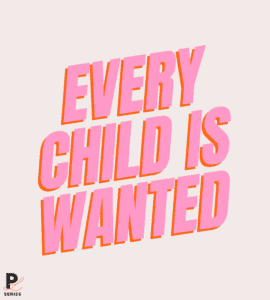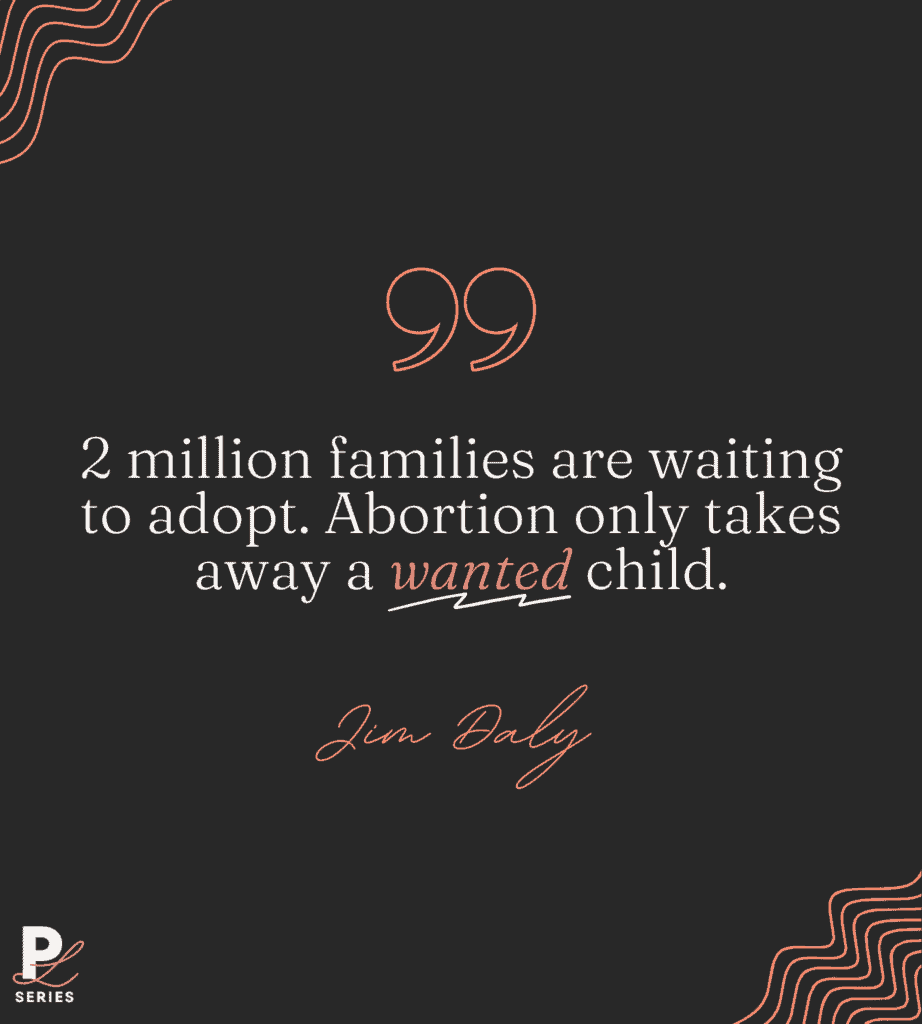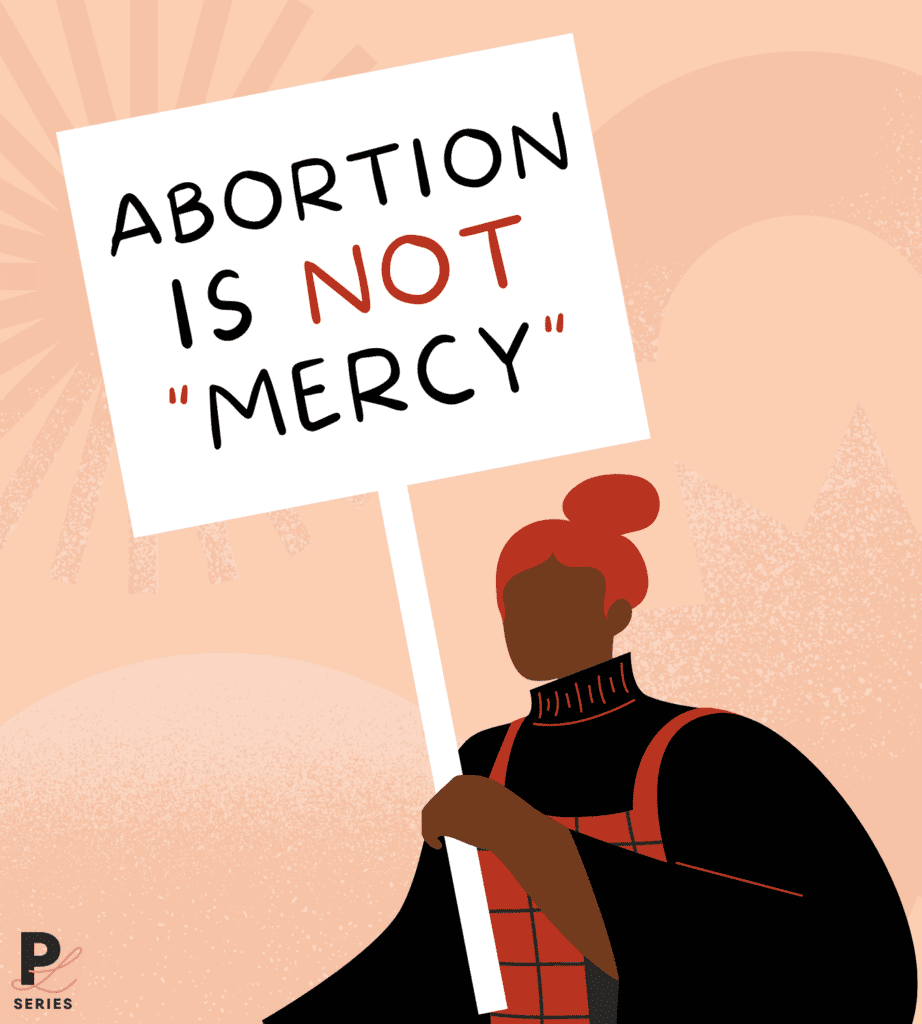Abortion. Foster Care. Words that stir emotions and controversy. With the end of Roe last year, a misconception has risen to the surface in our society attempting to link abortion and foster care. There is a false notion that abortion will prevent unwanted children from entering the foster care system – that more children will come into foster care because of the overturn of Roe.
Research shows that most children enter foster care because they are victims of abuse or neglect, not because they are relinquished. Something has happened to them in their home. An investigation has been done, and it has been determined that the parents or caregivers, in their current situation, cannot provide a safe environment for the child. These issues can range from mental health to poverty, homelessness, drug use, physical abuse, malnutrition, etc. Whatever the reason, it is because the child is in danger in some way. It is not because they are unwanted.
The dictionary defines unwanted as “not desired or needed; not wanted.” On the contrary, as someone who has adopted four children from the foster care system, I have seen birth parents who love their children, want them, and will fight to keep them. Even if they cannot remedy the concerns that brought their child into foster care, they want the best life for their child. They want their child.
If it is possible to return the child safely, the state’s primary goal is reunification at the end of the process. Parents involved in the foster care system are provided a service plan detailing the next steps toward their child’s return to the home. These plans, for example, can include requirements such as finding and maintaining a job, adhering to a visitation schedule, counseling, anger management, drug rehabilitation, and providing the building blocks to restoring the relationship with their child.

Through this process, parents are given the resources to make reunification and family preservation a viable possibility, where the child can be in a loving and safe environment. According to the latest report from the U.S. Department of Health and Human Services, 47 percent of children leaving the foster care system were reunited with their parents.
Even if they are unable to reunify with the parent, and no other family members are candidates for kinship care, abortion is not an answer for the children who are in the foster care system or as a means to prevent others from coming into the system. Psalm 139:13 (NIV) says, “For you created my inmost being, you knit me together in my mother’s womb.” A few verses later, it says, “Your eyes saw my unformed body; all the days ordained for me were written in your book before one of them came to be.” When a child can be placed in a nurturing foster home or adoptive home, they can grow and thrive. Every child deserves to be loved and to feel like they belong.
Equip yourself with more logic and love for effective and healing pro-life conversations. Check out I Am ProLife’s Perfect Love Campaign.
No one would argue that the foster care structure has room for improvement. Even in the best-case scenario, case managers doing their best with the information given are part of a flawed system. However, solutions for a better foster care system should not be tied to abortion. The two are unrelated. Providing abortions will not prevent the concerns that need to be addressed within the current child welfare system, such as support after reunification, ongoing counseling, ongoing therapies, and youth aging out of foster care with no place to call home.
Amid their hardships and flood of emotions during pregnancy, birth mothers need to see the support of a community of Christians wrapping around them. Birth fathers need courageous men to lovingly speak truth into their lives. These parents need to see the solution is not found in abortion. The solution can be found in the church serving these families on their journey.
There is no better community to rally behind these birth families than a church community that wraps around them and says, “We are for you and for your baby. We are here to walk this path with you.”
Additional Resources:

That same Christian community should be ready and willing to serve families in crises, working to prevent children from entering the foster care system in the first place. The church should ask questions such as, “What are the needs of this family? How can the church help this family meet their basic needs?” Church communities that wrap around vulnerable families can provide the support that may not come from any other avenue.
God calls all Christians to do something. If you are unsure where to begin serving, start by talking with your pastor. Some great resources with practical ideas will help you understand the struggles and joys of these families and how you can come alongside them as they care for and love these children in their homes.
Abortion will not fix the foster care system. Abortion will never change the fact that there is a need for foster care in our culture. Trying to put focus on a false notion that unwanted children will overrun the system provides a misconception of the purpose of foster care. The purpose of foster care is to protect children and make sure they are in a safe and loving home. Through this process, the birth parents are supported and encouraged to take positive steps toward the goal of reunification. They are not relinquishing their child to the system. They are working towards a goal.

Abortion does not provide for reunification. When that is impossible, the next step is identifying a loving home for adoption, which allows a child to flourish and provides opportunities to become all God has created them to be. These children are not unwanted. God loves them. They are loved in their forever home. They have found a place to belong.
The post “Unwanted” Children, Foster Care and Abortion appeared first on Focus on the Family.
Continue reading...
Children in Foster Care Are Not Unwanted
Research shows that most children enter foster care because they are victims of abuse or neglect, not because they are relinquished. Something has happened to them in their home. An investigation has been done, and it has been determined that the parents or caregivers, in their current situation, cannot provide a safe environment for the child. These issues can range from mental health to poverty, homelessness, drug use, physical abuse, malnutrition, etc. Whatever the reason, it is because the child is in danger in some way. It is not because they are unwanted.
The dictionary defines unwanted as “not desired or needed; not wanted.” On the contrary, as someone who has adopted four children from the foster care system, I have seen birth parents who love their children, want them, and will fight to keep them. Even if they cannot remedy the concerns that brought their child into foster care, they want the best life for their child. They want their child.
Reunification Is the Goal
If it is possible to return the child safely, the state’s primary goal is reunification at the end of the process. Parents involved in the foster care system are provided a service plan detailing the next steps toward their child’s return to the home. These plans, for example, can include requirements such as finding and maintaining a job, adhering to a visitation schedule, counseling, anger management, drug rehabilitation, and providing the building blocks to restoring the relationship with their child.

Through this process, parents are given the resources to make reunification and family preservation a viable possibility, where the child can be in a loving and safe environment. According to the latest report from the U.S. Department of Health and Human Services, 47 percent of children leaving the foster care system were reunited with their parents.
Every Child Deserves Love and Belonging
Even if they are unable to reunify with the parent, and no other family members are candidates for kinship care, abortion is not an answer for the children who are in the foster care system or as a means to prevent others from coming into the system. Psalm 139:13 (NIV) says, “For you created my inmost being, you knit me together in my mother’s womb.” A few verses later, it says, “Your eyes saw my unformed body; all the days ordained for me were written in your book before one of them came to be.” When a child can be placed in a nurturing foster home or adoptive home, they can grow and thrive. Every child deserves to be loved and to feel like they belong.
47% of children in foster care are reunited with their parents.
US Department of Health and Human Services
Perfect Love Series Video
Equip yourself with more logic and love for effective and healing pro-life conversations. Check out I Am ProLife’s Perfect Love Campaign.
Is There a Solution?
No one would argue that the foster care structure has room for improvement. Even in the best-case scenario, case managers doing their best with the information given are part of a flawed system. However, solutions for a better foster care system should not be tied to abortion. The two are unrelated. Providing abortions will not prevent the concerns that need to be addressed within the current child welfare system, such as support after reunification, ongoing counseling, ongoing therapies, and youth aging out of foster care with no place to call home.
What Role Can Pro-Life Christians Play?
Amid their hardships and flood of emotions during pregnancy, birth mothers need to see the support of a community of Christians wrapping around them. Birth fathers need courageous men to lovingly speak truth into their lives. These parents need to see the solution is not found in abortion. The solution can be found in the church serving these families on their journey.
- Give hope with a community ready and willing to support, including tangible support.
- Offer childcare while they finish their education.
- Accompany them to medical appointments.
- They need to know that someone will cheer them on and encourage them in their parenting.
There is no better community to rally behind these birth families than a church community that wraps around them and says, “We are for you and for your baby. We are here to walk this path with you.”
Additional Resources:
- How to Support Foster and Adoptive Families
- Foster Family Gift Ideas
- Simple Gestures Make All the Difference
- How to Help Kids in Foster Care

Additional Thoughts for Wanted Children
That same Christian community should be ready and willing to serve families in crises, working to prevent children from entering the foster care system in the first place. The church should ask questions such as, “What are the needs of this family? How can the church help this family meet their basic needs?” Church communities that wrap around vulnerable families can provide the support that may not come from any other avenue.
God calls all Christians to do something. If you are unsure where to begin serving, start by talking with your pastor. Some great resources with practical ideas will help you understand the struggles and joys of these families and how you can come alongside them as they care for and love these children in their homes.
Every Child is Wanted
Abortion will not fix the foster care system. Abortion will never change the fact that there is a need for foster care in our culture. Trying to put focus on a false notion that unwanted children will overrun the system provides a misconception of the purpose of foster care. The purpose of foster care is to protect children and make sure they are in a safe and loving home. Through this process, the birth parents are supported and encouraged to take positive steps toward the goal of reunification. They are not relinquishing their child to the system. They are working towards a goal.

Abortion does not provide for reunification. When that is impossible, the next step is identifying a loving home for adoption, which allows a child to flourish and provides opportunities to become all God has created them to be. These children are not unwanted. God loves them. They are loved in their forever home. They have found a place to belong.
The post “Unwanted” Children, Foster Care and Abortion appeared first on Focus on the Family.
Continue reading...





